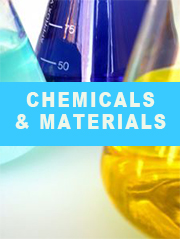Report overview
Alumina trihydrate is produced synthetically from bauxite. The outstanding features of aluminium hydroxide are flame retardance (dehydration at 200?C), high whiteness and low hardness. Alumina trihydrate is regarded as being the most important mineral flame retardant in the world and, thanks to its freedom from halogens, it is environmentally friendly and is characterized by its high efficiency as a smoke gas suppressant. This mineral is made from bauxite in accordance with the Bayer process.
This report aims to provide a comprehensive presentation of the global market for Alumina Trihydrate, with both quantitative and qualitative analysis, to help readers develop business/growth strategies, assess the market competitive situation, analyze their position in the current marketplace, and make informed business decisions regarding Alumina Trihydrate. This report contains market size and forecasts of Alumina Trihydrate in global, including the following market information:
Global Alumina Trihydrate Market Revenue, 2018-2023, 2024-2029, ($ millions)
Global Alumina Trihydrate Market Sales, 2018-2023, 2024-2029, (K MT)
Global top five Alumina Trihydrate companies in 2022 (%)
The global Alumina Trihydrate market was valued at US$ 1233.5 million in 2022 and is projected to reach US$ 1543.4 million by 2029, at a CAGR of 3.3% during the forecast period. The influence of COVID-19 and the Russia-Ukraine War were considered while estimating market sizes.
CHALCO is the largest manufacturer, with market share of 19.91% in 2019.
We surveyed the Alumina Trihydrate manufacturers, suppliers, distributors and industry experts on this industry, involving the sales, revenue, demand, price change, product type, recent development and plan, industry trends, drivers, challenges, obstacles, and potential risks.
Total Market by Segment:
Global Alumina Trihydrate Market, by Type, 2018-2023, 2024-2029 ($ Millions) & (K MT)
Global Alumina Trihydrate Market Segment Percentages, by Type, 2022 (%)
Standard Alumina Trihydrate
Fine Alumina Trihydrate
Specialty Alumina Trihydrate
Global Alumina Trihydrate Market, by Application, 2018-2023, 2024-2029 ($ Millions) & (K MT)
Global Alumina Trihydrate Market Segment Percentages, by Application, 2022 (%)
Polyester Resins Filler
Wire & Cable
Acrylic Solid Surface
Rubber
Others
Global Alumina Trihydrate Market, By Region and Country, 2018-2023, 2024-2029 ($ Millions) & (K MT)
Global Alumina Trihydrate Market Segment Percentages, By Region and Country, 2022 (%)
North America
US
Canada
Mexico
Europe
Germany
France
U.K.
Italy
Russia
Nordic Countries
Benelux
Rest of Europe
Asia
China
Japan
South Korea
Southeast Asia
India
Rest of Asia
South America
Brazil
Argentina
Rest of South America
Middle East & Africa
Turkey
Israel
Saudi Arabia
UAE
Rest of Middle East & Africa
Competitor Analysis
The report also provides analysis of leading market participants including:
Key companies Alumina Trihydrate revenues in global market, 2018-2023 (Estimated), ($ millions)
Key companies Alumina Trihydrate revenues share in global market, 2022 (%)
Key companies Alumina Trihydrate sales in global market, 2018-2023 (Estimated), (K MT)
Key companies Alumina Trihydrate sales share in global market, 2022 (%)
Further, the report presents profiles of competitors in the market, key players include:
Huber
Nabaltec
CHALCO
KC Corp
Inotal Aluminium
Zibo Pengfeng
Jianzhan Aluminium
AL-TECH
Sumitomo
R.J. Marshall
Nippon Light Metal
PT INDONESIA CHEMICAL ALUMINA
Dadco Group
Alteo
Outline of Major Chapters:
Chapter 1: Introduces the definition of Alumina Trihydrate, market overview.
Chapter 2: Global Alumina Trihydrate market size in revenue and volume.
Chapter 3: Detailed analysis of Alumina Trihydrate manufacturers competitive landscape, price, sales and revenue market share, latest development plan, merger, and acquisition information, etc.
Chapter 4: Provides the analysis of various market segments by type, covering the market size and development potential of each market segment, to help readers find the blue ocean market in different market segments.
Chapter 5: Provides the analysis of various market segments by application, covering the market size and development potential of each market segment, to help readers find the blue ocean market in different downstream markets.
Chapter 6: Sales of Alumina Trihydrate in regional level and country level. It provides a quantitative analysis of the market size and development potential of each region and its main countries and introduces the market development, future development prospects, market space of each country in the world.
Chapter 7: Provides profiles of key players, introducing the basic situation of the main companies in the market in detail, including product sales, revenue, price, gross margin, product introduction, recent development, etc.
Chapter 8: Global Alumina Trihydrate capacity by region & country.
Chapter 9: Introduces the market dynamics, latest developments of the market, the driving factors and restrictive factors of the market, the challenges and risks faced by manufacturers in the industry, and the analysis of relevant policies in the industry.
Chapter 10: Analysis of industrial chain, including the upstream and downstream of the industry.
Chapter 11: The main points and conclusions of the report.
